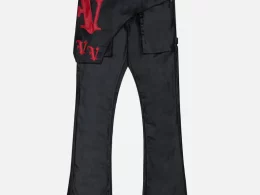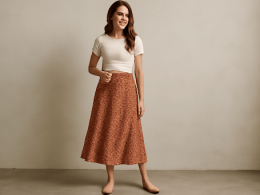Introduction
Shein has become a household name in the world of inexpensive, on-trend clothing. Its fast-fashion model delivers new styles almost daily. Shoppers around the world flock to Shein for the latest looks at low prices. Yet, this rapid turnover raises concerns about sustainability and the environmental cost of such speed.
In this article, we explore how Shein’s fast-fashion model shapes fashion trends, and we examine the brand’s efforts and criticisms related to Shein sustainability. We will look at the environmental impact of ultra-fast fashion retailers, discuss any eco-friendly policies Shein has introduced, and share practical tips for consumers who want style without guilt. By the end, you will better understand Shein’s role in fashion and how to make mindful choices.
What Is Shein’s Fast-Fashion Model?

Shein’s success rests on a simple formula: low prices, rapid clothing production, and an endless stream of new styles. Unlike traditional retailers that introduce new lines seasonally or monthly, Shein drops fashion trends daily. This approach relies on a network of small manufacturers, digital design, and data-driven insights.
1. Design and Trend Spotting
Shein’s team analyzes social media, celebrity outfits, and runway shows. They spot emerging fashion trends and quickly create similar designs. In many cases, a trending item on social media appears on Shein’s site within days.
2. Short Production Runs
Instead of ordering thousands of units, Shein orders small batches. This allows the company to test styles. If a design sells out quickly, Shein restocks. If not, it moves on. This agility reduces unsold inventory, but it also fuels continuous buying.
3. Low-Cost Manufacturing
Most Shein products come from factories in China. These factories keep costs low by paying minimal wages and using inexpensive materials like polyester blends. The low production cost allows Shein to offer clothes for as little as $5.
4. Direct-to-Consumer Model
Shein ships directly from its warehouses to consumers worldwide. By cutting out middlemen, Shein reduces costs and speeds up delivery. The company invests heavily in online fashion marketing social media ads, influencer partnerships, and flash sales.
5. Data-Driven Design
Shein tracks which items get clicks, shares, and purchases. If a top-selling item inspired by a celebrity outfit gets high demand, Shein orders more. This feedback loop ensures that the newest Shein fast-fashion items match customer interest closely.
This fast-fashion model appeals to shoppers who want trendy clothes without spending much. However, the very speed and low cost raise questions about Shein’s sustainability and ethical practices.
Impact on Fashion Trends

Shein’s ability to bring new styles to market quickly has reshaped global fashion trends. Instead of waiting for seasonal releases, shoppers now expect constant novelty. Shein influences trends in several ways:
1. Democratizing Trend Access
High-fashion runway looks often debut months before they reach stores. Shein accelerates this process by creating budget-friendly versions quickly. Now, a style spotted on a model at New York Fashion Week can be in a Shein ad in days. This democratizes fashion, letting more people wear what they see online retailers.
2. Micro-Trends and “Haul” Culture
Because Shein pushes out thousands of new items weekly, micro-trends emerge. A neon crop top might be popular for two weeks before a floral midi dress takes over. This cycle encourages “haul” videos, where influencers showcase dozens of new purchases. These videos amplify desire for the latest Shein styles.
3. Influencer Marketing Power
Shein partners with micro-influencers and large stars alike. By sponsoring posts, Shein taps into niche communities—streetwear fans, modest fashion seekers, or curvy body advocates. Each influencer’s followers rush to buy featured pieces. This drives localized trends that then spread globally.
4. Rapid Response to Feedback
Traditional brands use a longer design cycle. By the time a style hits stores, it may no longer be relevant. Shein’s data-driven design lets them pivot instantly. They drop items that customers love and drop those that flop. This keeps Shein at the cutting edge of fashion trends.
5. Price Accessibility
Even if a high-fashion dress sells for $500 at a designer boutique, Shein might offer a similar look for $20. This price gap widens Shein’s influence. Consumers who once could not afford the latest styles can now join the trend wave, reinforcing Shein’s market dominance.
While Shein’s model keeps closets fresh and consumers excited, the environmental and social costs of its rapid pace underpin questions about long-term sustainability.
Consumer Tips for Ethical Fast-Fashion Shopping

If you enjoy Shein for its affordability, balance it with conscious choices. Follow these tips for smarter, more sustainable shopping:
1. Plan Your Purchases
Avoid impulse buys. Wait 24 hours after seeing an item you like. This gives time to decide if you truly need it. Planning helps reduce unused garments that become waste later.
2. Choose Versatile Styles
Pick timeless basics in neutral colors. A well-made black tee or a pair of classic jeans pairs with many outfits. This reduces the need to buy dozens of single-use pieces.
3. Wash Less, Care More
Washing destroys fabrics. Aim to wash items only when necessary. Spot-clean small spills and air out garments between wears. Use cold water and a gentle cycle to preserve fibers.
4. Repair and Upcycle
Instead of throwing away a small tear or missing button, learn basic sewing skills. Mend holes or turn an old shirt into a bag. Upcycling extends the life of clothes and reduces waste.
5. Donate Responsibly
If you truly no longer need an item, donate to local charities or community centers. Check that donation sites accept fast-fashion brands. Ensure clothes are clean and in good condition to avoid burdening charities with unusable rags.
6. Use Second-Hand Platforms
Buy and sell Shein items on platforms like Poshmark or Depop. This extends garments’ lifespans. You can also find unique vintage pieces at thrift stores, reducing demand for new production.
7. Set a Budget
Allocate a monthly budget for the clothing industry. When you have a limit, you think twice before buying yet another pair of leggings. This helps prevent overconsumption.
Comparative Table: Shein vs. Sustainable Fashion Brands
| Aspect | Shein | Sustainable Brands |
|---|---|---|
| Price Point | Very low items often under $20 | Higher $50+ for quality basics |
| Production Speed | Ultra-fast new items daily | Slower seasonal releases, limited runs |
| Material Quality | Low-cost synthetics, mixed blends | Organic cotton, recycled fibers, natural fabrics |
| Transparency | Limited supplier info, few audits | Full supply chain transparency, verified by third parties |
| Environmental Impact | High textile waste, carbon emissions | Low eco-friendly materials, reduced waste |
| Ethical Labor Practices | Unverified labor conditions, low wages | Fair wages, safe work environments |
| Durability | Lower items may wear out after few washes | High made to last multiple seasons |
| Recycling Programs | Limited collection, unclear recycling path | Strong take-back programs, clear recycling |
| Consumer Education | Occasional sustainability blogs | Regular education, workshops, transparency |
| Brand Perception | Trendy, affordable, criticized for waste | Ethical, premium, environmentally conscious |
Conclusion
Shein’s fast fashion business model has transformed the way people shop for trendy clothes. With new styles added daily at low prices, Shein meets the demand for constant novelty. Yet, this speed and affordability come at an environmental and ethical cost. Rapid production, synthetic fabrics, and global shipping contribute to Shein’s sustainability challenges.
While Shein has introduced initiatives like eco-friendly collections and supply chain audits critics argue these efforts remain small compared to its vast output. True improvement will require deeper changes, such as slowing production cycles, using higher-quality produces clothes materials, and ensuring labor transparency. For consumers, balancing Shein purchases with mindful habits like repairing, upcycling, and supporting second-hand markets helps reduce waste.











